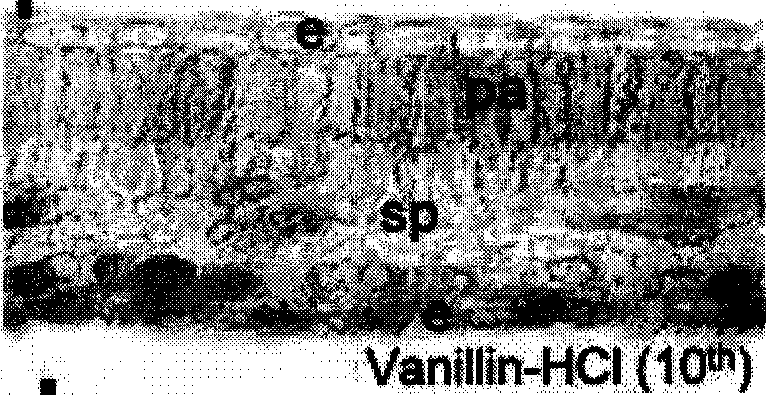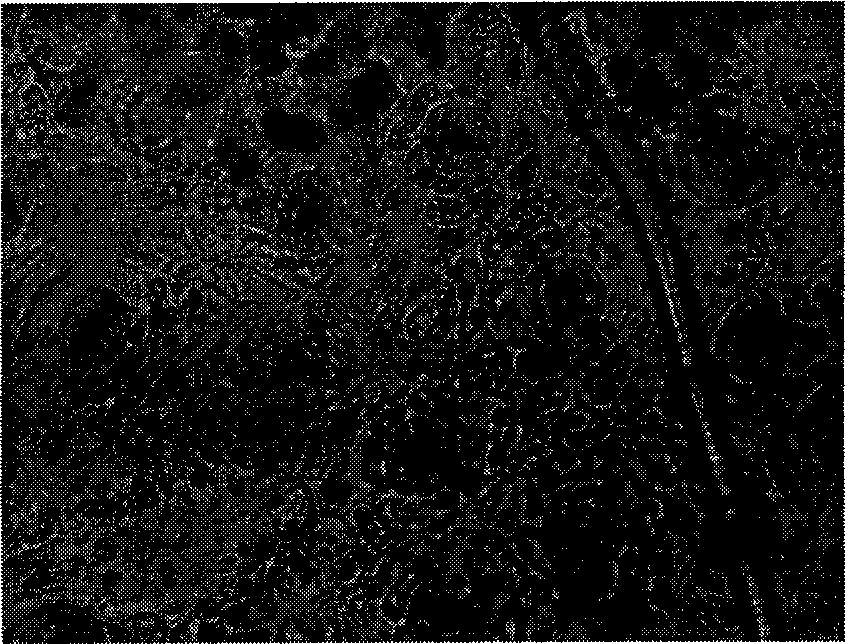Chemical positioning method for tree plant catechin histiocyte
A technology of tissue cells and positioning methods, which is applied in the direction of optical testing of defects/defects, etc., can solve the problems of low sensitivity of dyeing agents and lack of specificity of dyeing agents, and achieve the effect of simple dyeing process and convenient operation
- Summary
- Abstract
- Description
- Claims
- Application Information
AI Technical Summary
Problems solved by technology
Method used
Image
Examples
Embodiment
[0037] Major equipment
[0038] 1. Cutting edge blade (Japan-US brand); 2. Slide glass; 3. Cover glass; 4. Dropper; 5. Petri dish with a diameter of 9 cm; 6. Sharp-nosed tweezers;
[0039] Materials and Reagents
[0040] 1. Materials:
[0041] (1) Fresh tea leaves and tender stems that have just grown within a week in spring or summer; (2) Tea root tips that have just grown; (3) Tea callus; (4) Fresh carrots.
[0042] 2. Main reagents:
[0043] (1) 1% vanillin concentrated hydrochloric acid solution: get 1g vanillin and dissolve in 100ml concentrated hydrochloric acid;
[0044] (2) clean water;
[0045] (3) 10% hydrochloric acid solution: get 26g concentrated hydrochloric acid concentration (36%) and add 10g water;
[0046] (4) softening agent: (50% alcohol: glycerin = 1: 1), that is: 50% alcohol solution and glycerin are mixed by volume 1: 1;
[0047] (5) 15% hydrofluoric acid: get 32g concentrated hydrofluoric acid concentration (47%) and add 15g water;
[0048] (6) F...
PUM
 Login to View More
Login to View More Abstract
Description
Claims
Application Information
 Login to View More
Login to View More - R&D
- Intellectual Property
- Life Sciences
- Materials
- Tech Scout
- Unparalleled Data Quality
- Higher Quality Content
- 60% Fewer Hallucinations
Browse by: Latest US Patents, China's latest patents, Technical Efficacy Thesaurus, Application Domain, Technology Topic, Popular Technical Reports.
© 2025 PatSnap. All rights reserved.Legal|Privacy policy|Modern Slavery Act Transparency Statement|Sitemap|About US| Contact US: help@patsnap.com



